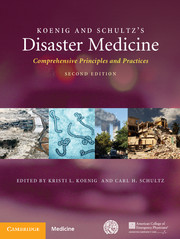Hall, EJ.
Acute effects of total-body irradiation. In:
Hall, EJ, ed.
Radiobiology for the Radiologist.
Philadelphia, PA,
Lippincott Williams & Wilkins,
2000;
124–
135. Of note, however, only one (5%) of the twenty-one Chernobyl emergency workers receiving doses in excess of 650 cGy survived, despite aggressive supportive care (thirteen received allogeneic bone marrow transplants). Fifteen (68%) of the twenty-two emergency responders receiving doses between 420 and 640 cGy survived. See United Nations Scientific Committee on the Effects of Atomic Radiation. Sources and Effects of Ionizing Radiation. Annex J: Exposures and effects of the Chernobyl Accident. New York, United Nations, 2000.
http://www.unscear.org/docs/reports/annexj.pdf (Accessed September 5, 2015).
Google Scholar 


